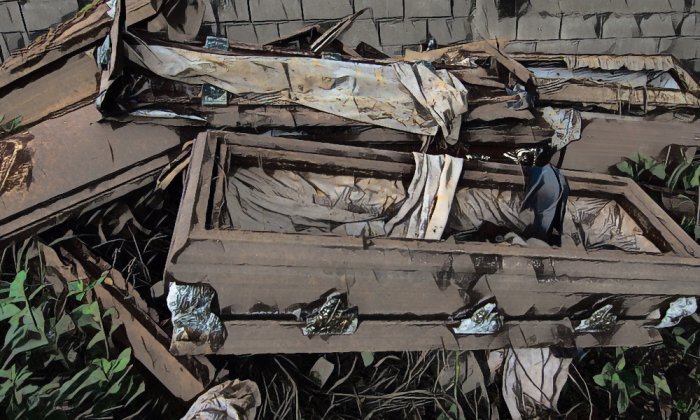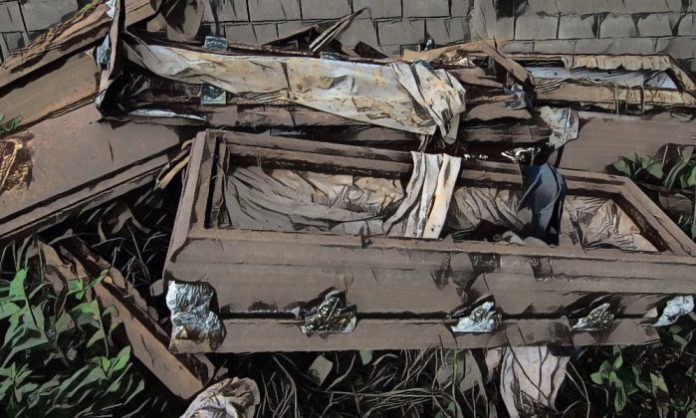Global events such as pandemics can momentarily focus attention on a fundamentally overlooked pre-existing human condition: the sheer inequality of how individuals in power decide who lives and who dies.

By: John Troyer
Pandemics make ignoring death harder to do. That doesn’t mean government officials and friends alike won’t symbolically look the other way or reflexively stare harder at their phones during mortality spike events. But the longer any act of ignoring continues, the more obvious the avalanche of death being ignored becomes.
Ignoring something is, of course, different than repressing it. We are acknowledging its existence by ignoring it. We see death. We understand it happens. All of us know people who have died. Everyone reading these words will eventually die.
Which brings me to our current death moment.
The Covid-19 pandemic is but one example from a long list of morbidity and mortality events that momentarily exposed the politics of death for everyone to see. And by everyone, I mean the citizens of every single country on the planet who are suddenly witnessing what those of us who work in death full-time already knew: Our leaders regularly choose to decide who lives and who dies.
Now flip that last statement into a question and one can begin to see the genealogical shadow of Queens and Emperors: Who lives and who dies? Thumbs up or thumbs down? These are foundational and urgent questions that confront modern governments with choices to make on any given day but especially so during a pandemic. The early AIDS epidemic remains a tragic illustration of how different governments decided that the queer communities watching gay men die in unprecedented numbers could be ignored until suddenly those same governments were dealing with a pandemic that remains with us today.
Thanatopolitics, or the Politics of Death
Who lives and who dies are clearly not new questions, but global events such as pandemics can momentarily focus attention on a fundamentally overlooked pre-existing human condition: the sheer inequality of how individuals in power answer those questions.
And while it is correct to state that all biological creatures die at a certain point, that dying is hardly universal in how it impacts different communities. What I’m saying may not come as a surprise, but it is important to foreground this information as a way of stating that when discussing death in the modern Western world, we are often discussing the politics of death. Even if people do not realize this distinction when talking about death and dying — and many people, I believe, do not — the ways end-of-life trajectories become discussed focus on the dynamics causing that death to happen. This distinction matters since understanding how a person died — the core causation of the death, especially during a pandemic — is often laden with political questions around access to care, medical ethics, and economic stability.
While death and dead bodies are obviously connected, the politics surrounding each remains unique and should be distinguished from one another.
This death politics can properly be called a thanatopolitics, borrowing thanato for death from the Ancient Greeks and working with both Giorgio Agamben’s and Michel Foucault’s ideas around biopolitics and forms of life.
What this thanatopolitics of who lives and who dies — with a heavy emphasis here on the “dies” bit — is not is the related concept of necropolitics. The latter is a distinct and important idea first suggested by philosopher Achille Mbembe that more accurately describes the politics of dead bodies (the necro in Ancient Greek). The thanato/necro distinction is crucial in everyday circumstances since the politics of death is often described using the necro- prefix — and while death and dead bodies are obviously connected, the politics surrounding each remains unique and should be distinguished from one another. Dead body politics and death politics occupy distinct experiences for the average person, and recognizing the difference between what death is and what a dead body is remains profoundly important for medicine, the law, and everyday decision making in places such as hospices.
In my book “Technologies of the Human Corpse” I devote the entirety of a chapter to discussing precisely these distinctions between the bio, thanato, and necro, since the politics of each remains simultaneously always visible (if you know where to look) and completely hidden. The book manuscript was completed in 2019, before Covid-19, but spends many pages discussing the ways AIDS both impacted and significantly changed how funeral directors handled dead bodies, e.g., personal protective equipment, or PPE, an acronym we’re all sadly familiar with by now.
By discussing the thanatopolitics of the early AIDS epidemic (which is still happening, lest anyone forgets), it is easy to see how the Covid-19 pandemic ticks all the boxes as to what contemporary thanatopolitics relies on: social and economic disadvantages that contribute to higher mortality rates, especially in brown and black communities; hundreds of thousands of people dying entirely preventable deaths in populations that become economically acceptable deaths (e.g., the elderly and disabled); access to life-saving medical treatments that significantly favor wealthy communities and nations, and so on.
Where Covid-19 thanatopolitics morphed into something I had not predicted was when the emergence of what I call virological determinism became the logic that almost every local, national, and global governing body used to lay blame for preexisting societal problems. This is a gloss on technological determinism, the tendency we humans have to blame any “technology” for causing our very human-created problems, and works much the same way. By taking a rapidly-out-of-control pandemic and mixing in contemporary health inequalities and unprepared — and sometimes negligible — political leaders, we in the West ended up in this thanatopolitical quagmire.
I say quagmire, since it is unclear right now if and when any of this will actually be “done” no matter the speed with which people want to move on. But there are lessons to be learned, and in this way, thanatopolitics can be extremely productive and useful.
The politics of death become a way to acknowledge all those who died and what should be done in the future to prevent more needless deaths. One of those key lessons includes governmental leaders both knowing about pre-existing pandemic response plans and then using those plans when responding to a non-stop mass fatality event such as Covid-19. In addition to following the already extant response plans, leaders should continue to update and renew those plans on a regular basis. HIV/AIDS taught the world how quickly a virus could adapt to everything we threw at it. I remain hopeful that we reflect on that lesson in the coming decades.
Understanding how a person died is often laden with political questions around access to care, medical ethics, and economic stability.
On March 18, 2020, I flew on a plane from the UK (where I normally live) to my hometown in Wisconsin to help my parents with some health issues. I did not know it then, but this was one of the last planes to make that trans-Atlantic flight for many months due to the pandemic.
On the flight, I read an incisive essay by Michael Specter in the New Yorker on the cascading failures of the U.S. health care system. It ends with the following prediction that presciently understood the who-lives-and-who-dies thanatopolitics that defined the past 18 months: “The bigger question is whether we will learn from the fact that this [Covid-19] pandemic will kill many more people than it had to. I’d like to think we would, but, if the past is any guide, this pandemic will end with a bunch of new commissions and ominous reports. As soon as they are printed, they will be forgotten.”
We can choose to ignore death and the thanatopolitics that choice brings for future body counts. But if Covid-19 has demonstrated anything it is that we do so at our own peril.
John Troyer is director of the Centre for Death and Society at the University of Bath and author of “Technologies of the Human Corpse.”








